Wilderness Survival Luxuries
Equipment and resources that make for smoothin' it rather than roughin' it while camping or living in the woods
These items are totally non-essential for wilderness survival. In fact, they probably don't even contribute to actual survival whatsoever. However, they can be worth their weight in gold when it comes to convenience and enjoyment in the great outdoors, and sometimes survival is all about attitude and morale, so maybe these luxuries will indeed save your life, but don't count on it...
Fire Blower
Fire is one of the four essential components of survival and has many uses, including morale boost and just plain enjoyment. This little tool won't actually start a fire, but it helps maintain an already lit or dying fire by making it WAY easier to do something that you already do to the fire anyways, which is stoke the embers by blowing on it.
Normally, to stoke the embers of a fire you have to bend way down and put your face right near the fire, scattering ash and sparks into your face and eyes when blowing on it and even potentially singeing some hair from the flames. But this “fire blower” is a total game changer. With it, you can stoke the embers more precisely, forcefully, and from a safe and comfortable distance.
This tool is essentially just a lightweight metal tube that compresses and extends, similar to a radio antenna. You simply extend it out, stick one end near the embers and blow air through the other end with your mouth. It's so much nicer to be able to stoke the embers this way. The metal tube extends to about two feet long, but compresses down to just a few inches for easy storage and transport. You could even carry one in your pocket. They come in a small plastic capsule for storing.

Personally, I use this fire blower so often around the campsite, usually several times per day, that I just leave it fully extended at all times, and only compress it when actually packing and moving out of that location.
One issue they do have is that moisture from your breath will sit inside the tube and can eventually lead to rusting and breaking, which is one reason that I leave it fully extended whenever possible, so that it can air out better. However, this eventual rusting and breaking can take a long time to occur, several months or more, and so is not really a big problem, especially since the fire blowers are so cheap and usually come in packs of multiples. Also, you have to be careful not to accidentally step on it when it's extended or it could bend or crimp. However, all of these considerations are minor issues compared to how useful the tool is.
I used to camp without one of these fire blowers for a long time, but now, after experiencing the huge luxuriousness they provide, I may never go live in the woods without one again.
This nifty little fire blowing tool makes stoking campfire embers ten times easier

Cooking Grate
Cooking food and boiling water are usually essential for survival. However, cooking and boiling on a flat grate balanced between two rocks is never essential.
A canteen or pot of water can just be set on the ground next to a campfire and it will literally boil from the side. But, if the ground is slanted or uneven, sometimes the container will tip over, especially if placed on some half-burnt embers or wood that burn through while the pot is being heated, causing the balance to shift. If all that water spills in the right location, it could put the fire completely out. Also, when cooking food in a pot next to a fire, such as a stew, the direct heat on the side will often burn the top part of the inside of the pot above the water line, adding burnt flavor to the meal. Plus, if your pot or teacup doesn't have a lid, a lot of ash can blow and land in your water when it's just set right down in the fire.
For these reasons and more is why it is so luxurious to be able to set your pot on a flat, stable, grated surface over the flames. To use a cooking grate, simply find two decent size rocks near your campsite and set them on either side of the fire, then straddle the grate in between. Or, if you can't find any good rocks in your area, using two big logs in place of the rocks can also work, and sometimes better; just watch out for the logs burning through over time.

I have tried a similar method to this by just setting the pot on the edges of two rocks straddling the fire (not even using a cooking grate) and technically it can work, but it doesn't leave much space for the fire and often it suffocates and dies from a lack of oxygen, and there is not much room to place large pieces of firewood. By spreading out the rocks and setting the cooking grate on them instead, there is far more space beneath for airflow and firewood.
I find the cooking grate method to be much less stressful and demanding than without one. I used to have to monitor my boiling containers almost constantly, making sure they don't start to lean or burn on the side. But with a cooking grate, I can just set the containers down and walk away, nothing can really go wrong. It's set and forget.
Heat goes up, so setting the pots directly above the flames is the most efficient way to cook them anyways. Plus, you can even grill up a fat, juicy steak on one of these grates if you have one.
Often, at my campsites, I will have a separate firepit just for cooking. I can set it up just for use with the grate and it won't impede my ability to have a nice big fire near or inside my shelter. When backpacking, I tie the grate to the outside of my pack; it's completely flat so it doesn't take up hardly any room if done properly. Some versions of cooking grates can warp and droop when heated, so a thicker, high-quality metal is better to prevent this.
A cooking grate is far from an essential survival item, it's purely for luxury and convenience, making life easier around the campsite while enjoying your time in the great outdoors.
A metal grate makes heating containers and cooking over a campfire more convenient and effective

Chair
One of the most common discomforts of camping in the wilderness is finding a nice place to sit down. Usually, the only answer is to just sit on the ground. This leads to a lot of sitting “Indian style” position with your legs crossed, and/or laying on your side, and continually switching back and forth, except for a few people who are able to somehow comfortably sit in lotus position for hours. I don't know about you, but personally it doesn't take long for my legs to start hurting when sitting that way. Plus, the ground may be wet, rocky, uneven, slanted, snow-covered, etc. A common solution is to saw a big log and sit on either the side of it or the stump, which isn't a bad idea, but there is no back rest!
Wouldn't it be nice to have an ACTUAL chair to sit in that is comfortable and relaxing? But of course, a good chair would be far too heavy and bulky to justify backpacking with for miles into the wilderness... right? Well, fortunately, due to the marvel of modern technology and engineering, there now exists very lightweight chairs that fold-up into small pouches. Some only weigh a few ounces and can compact down to the size of about a half gallon.
You might think a small, lightweight, foldable chair would be dinky and fragile, too small for comfortable sitting and/or possibly breaking when a hefty fellow sits down too fast. Some of them are probably like that, but there are also plenty of high-quality products, made of aluminum, nylon, and other strong yet lightweight materials, that can support over 300 lbs and are actually surprisingly comfortable to lounge in.
I personally own a very nice camping chair, and whenever I go camping I just strap my chair bag onto the back of my backpack with a carabiner; it doesn't take up any actual backpack space and the weight difference is negligible. And when I'm chilling around the campsite for days or even weeks at a time, there is no question whether bringing the chair was worth it or not.
Another benefit of a chair is that it can be used as a sort of table when no one is sitting in it. Personally, I set things in my camping chair all the time, such as various food items when I'm preparing dinner.
There are a lot of options on the market for camping chairs of varying brands, sizes, weights, designs, materials, prices, etc. A good one can cost upwards of $100 USD. When it comes to size, I find the larger chairs tend to be more comfortable, but of course that means a little more weight and packing size.
Obviously, a chair won't save your life, but it will make your life a lot more comfortable.
A small, lightweight, backpackable camping chair is one of the most simple yet significant campsite comforts

Tea / Coffee
Tea and coffee don't really contain any calories, so they can't be considered food. However, they do make delicious caffeinated beverages that can soothe the soul and perk up the mind.
It's so nice and refreshing to drink a warm, tasty beverage when camping in the woods, especially when it's cold outside. Or if it's hot outside, you can prepare the hot beverage and then submerge the container in a stream which will help cool it down, therefore serving cold tea or cold coffee. Plus, the caffeine will amp you up and can even give you clearer thinking, which may indirectly contribute to your ability to survive by giving you a kind of energy and/or helping you make better decisions.
I usually take green tea powder with me when I'm camping in the woods, but sometimes I also take black tea or other tea blends such as peppermint, lemongrass, etc. I actually cut open the tea bags and pour the powder directly into the drink; I feel it makes a stronger tea this way, but a lot of people don't like the resulting leaves floating around in their beverage.
This Japanese green tea, my favorite brand, makes a smooth, refreshing, caffeinated beverage

When it comes to making coffee, simply bring a pot of water to a boil, dump in one or two spoonfuls of coffee grounds and let it simmer for 2-5 minutes, then drink like normal coffee; the coffee grounds will sink to the bottom. In fact, in the old days before coffee machines were invented, this is how coffee was normally prepared. It is still my preferred way of making coffee, even at home.
For the best coffee, it is usually best to get whole coffee beans and then freshly grind them immediately prior to making the coffee, but in the woods this will probably be difficult to accomplish, unless you can improvise a mortar and pestle. So, preground coffee beans are a good alternative and can be packed and stored efficiently in a plastic ziplock bag.
This organic coffee is extra strong, dark, and loaded with caffeine that can provide a big mental boost

Some wild edible plants have components that can be steeped in hot water to make delicious and nutritious teas, such as pine needles, nettle leaves, bramble leaves, mints, and many more. A few plants can even be used to make caffeine-free coffee substitutes, such as dandelion and chicory. The roots of these plants are roasted until brown and brittle, and then ground and prepared as coffee.
Another, similar idea is to carry drink powders with you in your backpack, such as Gatorade, Cool-Aid mixes, etc. These not only taste delicious but may contain some vitamins, minerals, sugars, and/or electrolytes as well.
Coffee and tea won't keep you alive because they don't contain any calories, but it sure is nice to sit back and sip a delicious caffeinated beverage, even in the middle of nowhere.
Entertainment
Boredom is a common displeasure that can come upon someone when camping or surviving in the wilderness. Sure, there is almost always something that can be done around camp, such as improving the shelter, gathering firewood, setting traps, hunting, fishing, foraging, or just scouting around the area. However, many times people just get demotivated and lazy. A kind of lethargy can set in even if you're enjoying yourself in the great outdoors.
A little entertainment can go a long way towards getting people out of the laziness rut and motivated to do some activities, plus it can be just plain fun. There are a lot of options for outdoor entertainment, but when it comes to backpacking miles into the wilderness, what's needed is something small and lightweight. Two of the best options, in my opinion, are a harmonica and a deck of cards.
Musical instruments are one of the best forms of entertainment because of their infinite creative potential. Music is not only enjoyable but also inspirational; it can uplift your mood and boost morale, which is actually a big part of survival (attitude, state of mind, etc.). Most instruments will be too heavy and bulky to hike with, but a harmonica is small and lightweight, and perhaps the best choice of musical instrument for backpacking and camping.
Harmonicas can produce a vast spectrum of sounds. They also tend to be quite durable and not easy to break, plus they're inexpensive. One of the best things about a harmonica is that virtually anybody can pick one up, even for the very first time, and jam out something decent; it doesn't take hours and hours of practice to be able to play.
A harmonica is perhaps the best musical instrument to take backpacking and camping

As far as games are concerned, the most fun, versatile, and backpack-friendly option is probably just a simple deck of playing cards. There are dozens of card games that can be enjoyed by any number of players, such as poker, spades, hearts, gin rummy, go fish, etc. If you are completely alone, you can even play solitaire, a one player card game.
A standard deck of playing cards is one of the most versatile and fun forms of campsite entertainment

Books are another obvious form of “entertainment”. There are many different kinds of books, including fiction, non-fiction, novels, educational, informative, philosophical, spiritual, etc. Personally, I almost always take at least one or two books with me when I'm living in the woods. A wilderness survival guide is an obvious choice and could actually contribute to your survival, as well as plant identification, trapping, hunting, fishing guides, etc.
There are quite a few other options for outdoor entertainment, such as a hacky sack, small board games, crossword puzzles, tennis ball, and even a... yo-yo? Sometimes, games and musical instruments can be improvised from natural materials around you. This may require some extreme creativity and outside of the box thinking. People have been known to devise checkers and chess boards and pieces from wood and stones.
Some outdoorsmen might balk at the idea of such trivial amusements, believing that their time in the wilderness is best spent observing and enjoying nature itself directly, and such activities are merely modern diversions that retract from the deep, authentic reality of the natural world. Other people will say that a few small entertainments isn't going to hurt anyone, and may even increase their enjoyment of the outdoors. It's probably just a matter of personal preference. Life is all about balance, and survival is all about options, so throwing a small pack of cards, harmonica, or book in your backpack may be a smart “better safe than sorry” strategy.
Entertainment is definitely a luxury and not a survival necessity, but it can boost morale, foster social interaction, and exercise the mind and body, which could in fact positively affect your ability to survive. Plus, it's just downright fun.
If you have any additional suggestions for non-essential wilderness luxuries, please mention them in a comment below and they may even get added to this list!
Continue to Survival Kit...
Leave A Comment
Add Comment
Wilderness
Survival Gear
Fixed Blade Bushcraft Knife
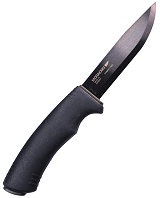
Ferrocerium
Rod Firesteel

550 Paracord
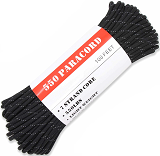
Stainless Steel Canteen
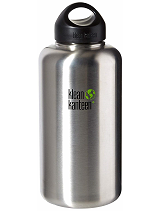
Waterproof
Tarp

Multitool
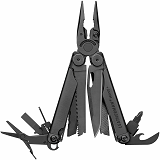
Stormproof Matches
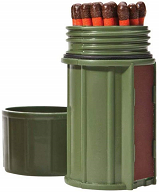
Folding
Hand Saw
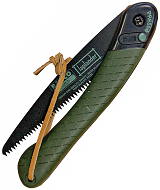
Stainless Steel
Pot
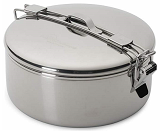
Waterproof
Rain Poncho
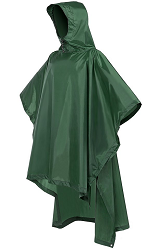
Water
Purification
Tablets

Kukri Machete
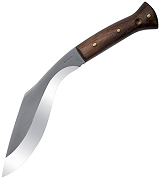
Magnifying
Lens Firestarter

Duct Tape
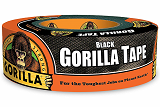
Compass
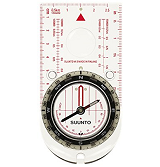
Water Filter

Magnesium
Stick Firestarter
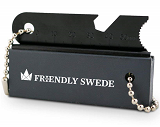
Blade
Sharpener
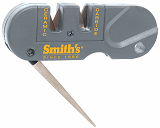
Firestarting
Tinder
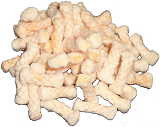
Fishing Kit
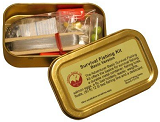

Survival Gear
Fixed Blade Bushcraft Knife

Ferrocerium
Rod Firesteel

550 Paracord

Stainless Steel Canteen

Waterproof
Tarp

Multitool

Stormproof Matches

Folding
Hand Saw

Stainless Steel
Pot

Waterproof
Rain Poncho

Water
Purification
Tablets

Kukri Machete

Magnifying
Lens Firestarter

Duct Tape

Compass

Water Filter

Magnesium
Stick Firestarter

Blade
Sharpener

Firestarting
Tinder

Fishing Kit


Comments (0)